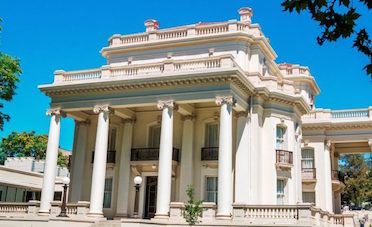News Release
Utah economy expected to continue to prosper in 2017
Salt Lake City (January 18, 2017) — Utah’s economic expansion is expected to continue in 2017, according to the latest Economic Report to the Governor.
The report, released today and presented to Gov. Gary Herbert at the Salt Lake Chamber’s annual Utah Economic Review, documents Utah’s strong economic performance in 2016 and forecasts another favorable year for the Utah economy.
“Utah’s economic performance was among the strongest in the nation in 2016. Our state added jobs at more than twice the pace of the nation and our unemployment rate is the lowest it’s been in over eight years,” said Juliette Tennert, director of economic and public policy research at the Kem C. Gardner Policy Institute and the co-chair of the Utah Economic Council, which prepared the report. “We expect that growth will moderate in 2017, but Utah’s economy will continue to be a top-performer among states,” said Tennert.
Highlights from the report:
- Employment – Utah added an estimated 49,500 jobs in 2016. 6 percent employment growth was more than double the national rate of 1.7 percent. All major sectors posted job growth.
- Population – Utah’s population surpassed the 3 million mark in 2016. Net in-migration of just over 24,000 was the most in 10 years and contributed to 40 percent of the state’s total population growth.
- Construction – The construction sector posted the highest job growth in 2016, 6.8 percent, fueled by both robust residential and commercial activity. The value of commercial construction reached a record $2.5 billion in 2016.
- Leisure and hospitality – The leisure and hospitality posted 6.1 percent job growth in 2016, fueled by low unemployment and rising wages for Utahns, along with growth in travel and tourism activity – Utah’s ski resorts and national parks hosted a record number of visitors in 2016.
The Utah economy is not without headwinds in 2017. Potential changes in federal trade policies, geopolitical instability, normalization of monetary policy, and supply of workers will continue to create uncertainty and reason for caution. In addition, education warning signs and persistent air quality challenges concern economists.
“There are things we can and cannot control that impact the economy,” said Natalie Gochnour, associate dean of the David Eccles School of Business and member of the Utah Economic Council. “Many of our greatest risks come from the outside – Federal Reserve policies, global economic conditions, energy prices, and geopolitics. Education and air quality have been identified by the Utah Economic Council as two areas where we can make a difference in Utah’s future economic performance.”
Demographic advantages, an appealing business climate, and increasing labor force participation will continue to be an advantage for the Utah economy in 2017. Potential expansionary federal fiscal policy including tax cuts and infrastructure spending also present an upside risk. All going well, Utah’s economy will once again be one of the top performing economies in the nation in the coming year.
The data and summary documents can be found here.






